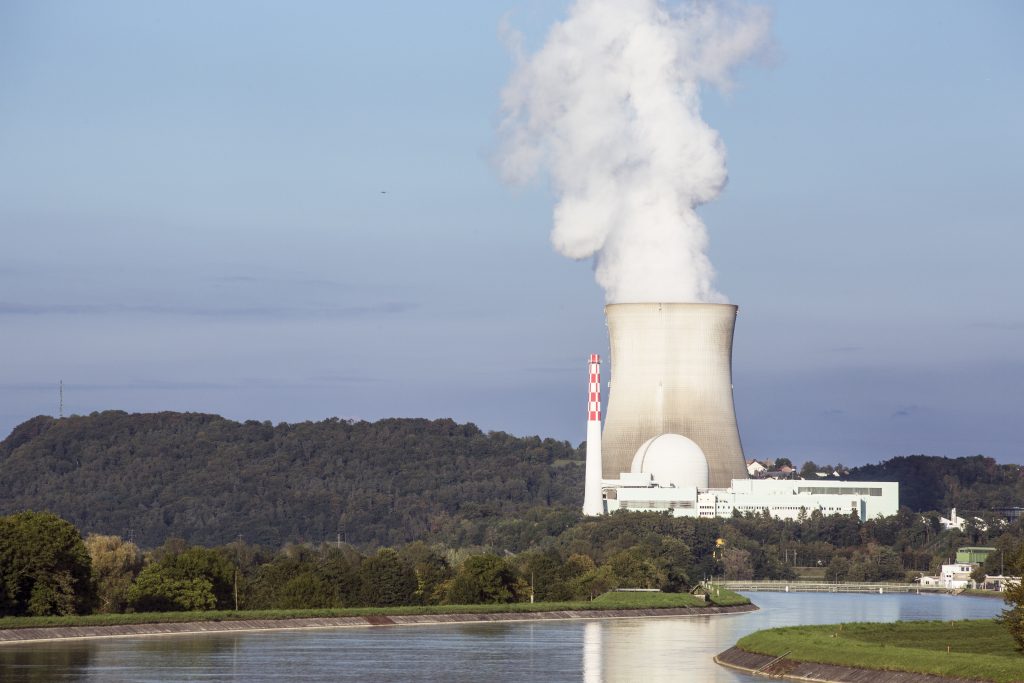Greater Kaohsiung will soon be home to numerous power-hungry high-tech centers, but where will the needed electricity come from?
August 12, 2025
By Eryk Michael Smith | The Kaohsiung Times
KAOHSIUNG, Taiwan – In May 2025, Taiwan shut down the Maanshan Nuclear Power Plant’s Unit 2. The plant, located within view of one of south Taiwan’s most famous beaches in the Kenting National Park, was the country’s last operational nuclear power plant. Maanshan had a capacity of more than 950,000 kW, but authorities – in keeping with prior promises, and the desires of a majority of Taiwanese as expressed in a referendum – declined to extend its operating license after the power station reached the end of its 40-year lifespan.
The end of atomic power in Taiwan was cheered by activists and others who say the risks of an accident on this earthquake-prone island are too high, and who further point out that Taiwan has yet to find a safe, permanent solution for nuclear waste. However, for some in the business world, the closure is intensifying concerns about the country’s ability to meet its escalating power demands.
Long celebrated as a global tech powerhouse, Taiwan finds itself at a critical juncture. As the island nation accelerates its push into artificial intelligence (AI) and advanced semiconductor manufacturing, a looming energy crisis threatens to derail these ambitions.
The AI Surge and Energy Demand
The AI revolution is well underway in south Taiwan. Foxconn, in collaboration with Nvidia, has announced plans to construct a massive AI data center in Kaohsiung, aiming for a total power capacity of 100 megawatts. This facility is just one among several projects – many based on the plains between Chiayi and Pingtung – that are poised to significantly increase the island’s electricity consumption.
AI data centers are notoriously energy-intensive. A recent study highlighted that AI now accounts for up to 20% of global data center electricity use, with projections suggesting this could rise to nearly 50% by the end of the decade. For Taiwan, this surge in energy demand comes at a time when its power grid is already under strain.
Nuclear Phase-Out: A Double-Edged Sword
The end of Taiwan’s nuclear energy era with the decommissioning of the second reactor at the Maanshan Nuclear Power Plant was in alignment with the ruling Democratic Progressive Party (DPP) government’s long-standing goal of a “nuclear-free homeland.” But, critics note, it also eliminated a significant source of low-carbon, reliable energy. There are also experts here and abroad who worry about Taiwan’s dependence on energy imports at a time when the People’s Republic of China (PRC) appears to be gearing up for some kind of blockade or embargo scenario.
National Security Council advisor to the first Trump administration Matt Pottinger, and Mark Montgomery, former director of operations for U.S. Pacific Command, both told Bloomberg News earlier this year that restarting Taiwan’s nuclear power plants is essential as a safeguard against Chinese threats. Speaking to Bloomberg, Pottinger said, “Taiwan’s vulnerability to an energy embargo is acute but can be mitigated through improvements to its grid, more secure supply lines and storage of LNG, and, yes, revving up idle nuclear power plants.”
There are also environmental concerns. The absence of nuclear power has forced Taiwan to rely more heavily on fossil fuels. As of 2024, over 83% of the island’s electricity generation came from coal and natural gas, a figure that has now increased. This shift not only undermines environmental objectives but also exposes the country to volatile global energy markets.
Industrial Giants Feel the Heat
Taiwan’s semiconductor industry, particularly Taiwan Semiconductor Manufacturing Company (TSMC), is feeling the impact of the energy crunch. TSMC, which consumed 6.4% of the nation’s power in 2021, faces challenges due to soaring energy prices and increasing risks of power outages.
The unpredictability of energy supply and costs is causing concern among investors and industry leaders. The American Chamber of Commerce in Taiwan has emphasized the urgent need for a stable and transparent electricity pricing system to ensure the country’s competitiveness in the global market.
Renewable Energy: A Work in Very Slow Progress
While Taiwan has set ambitious targets to increase its renewable energy capacity, progress has been slow. As of 2024, renewables accounted for just 11.6% of electricity generation. Efforts to expand solar and wind energy face challenges, including limited land availability and regulatory hurdles. Moreover, the intermittent nature of renewable sources – as demonstrated when floating solar panels were completely destroyed after a recent typhoon – raises concerns about the reliability of renewables in meeting the continuous power demands of AI data centers and semiconductor fabs.
Reconsidering Nuclear Energy?
The reality of growing energy challenges is pushing renewed debate about the role of nuclear power in Taiwan’s energy mix. The DPP controls the presidency, but parliament is in the hands of the opposition, which greenlit a national referendum scheduled for August 23, 2025, to decide whether the Maanshan-2 nuclear power plant should resume operations. Naturally, some in Pingtung are furious that the referendum only asks if the plant in their “backyard” should be restarted.
Some experts argue that reintroducing nuclear energy, possibly through modern small modular reactors, could provide a stable and low-carbon solution to the island’s energy needs. However, public apprehension, fueled by past nuclear accidents and seismic risks, remains a significant barrier, as does the anti-nuke position that is part of the DPP’s political DNA.
Conclusion
Taiwan, in particular southern Taiwan’s, aspirations to lead in AI and advanced manufacturing are presently at odds with its current energy infrastructure. Balancing environmental goals, public sentiment, and industrial demands will require strategic decisions and, potentially, a reevaluation of its energy policies.
How the public and our elected officials choose to navigate this complex landscape will determine not only Taiwan’s technological future but also its role in the global economy.



